Behold water lilies!
You will find water lilies in parks, gardens and ponds, in places where it stays fairly warm. They can bloom in a range of colors, anytime from late spring through fall.
The showy, fragrant, solitary flowers are borne at or above the water surface on long stalks attached to underwater stems. Each cuplike flower has a spiral arrangement of its many petals. Some flowers open only in the morning, or in the evening, to attract insect pollinators. Their seeds fall and then float away or sink.
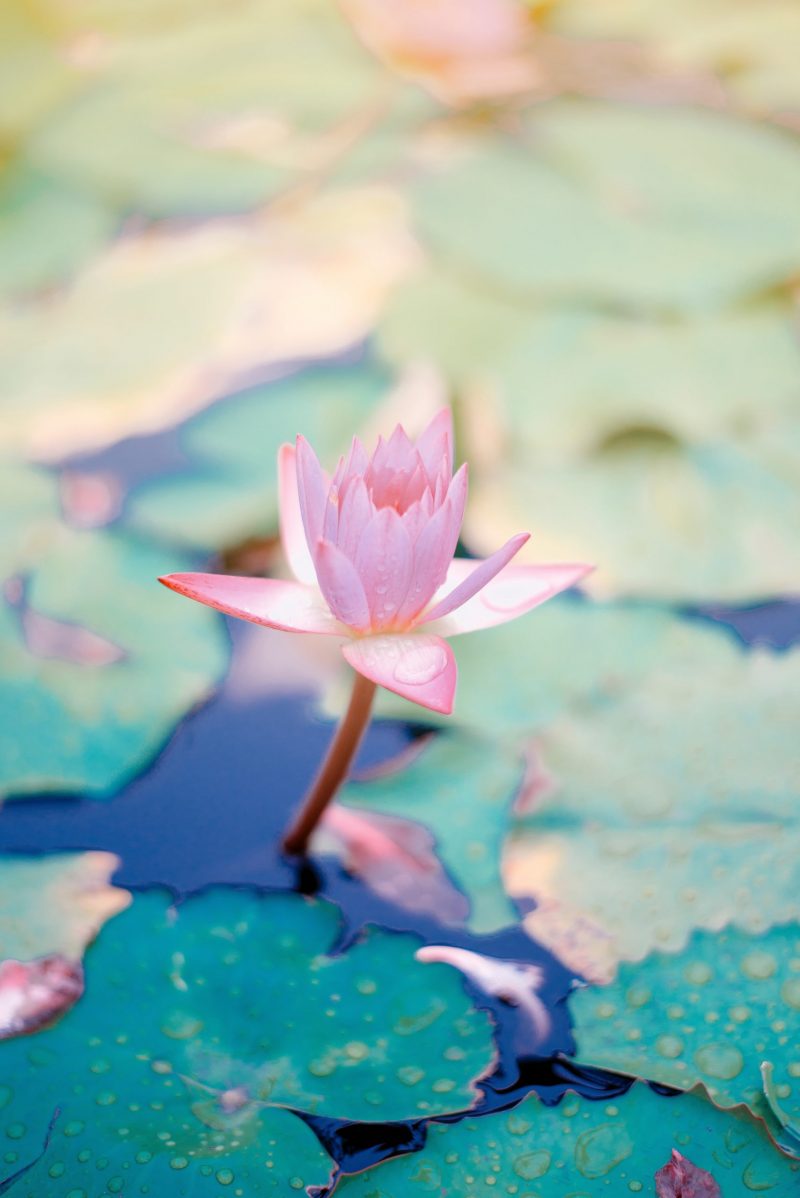
Water lilies can grow in a rainbow of colors, including pink, red, orange, yellow, purple, and blue. Sometimes the blossoms change shades as they age. Even the leaf colors vary from deep green to burgundy red.
While water lilies may be most visible on the surface of still freshwater, they are rooted in the mud below, where they overwinter and regrow the following year.
Their floating leaves – which may be cup-shaped, star-shaped, smooth or jagged – are designed to float on the water’s surface. This adaptation lets them maximize their exposure to sunlight, making water lilies efficient at photosynthesis.
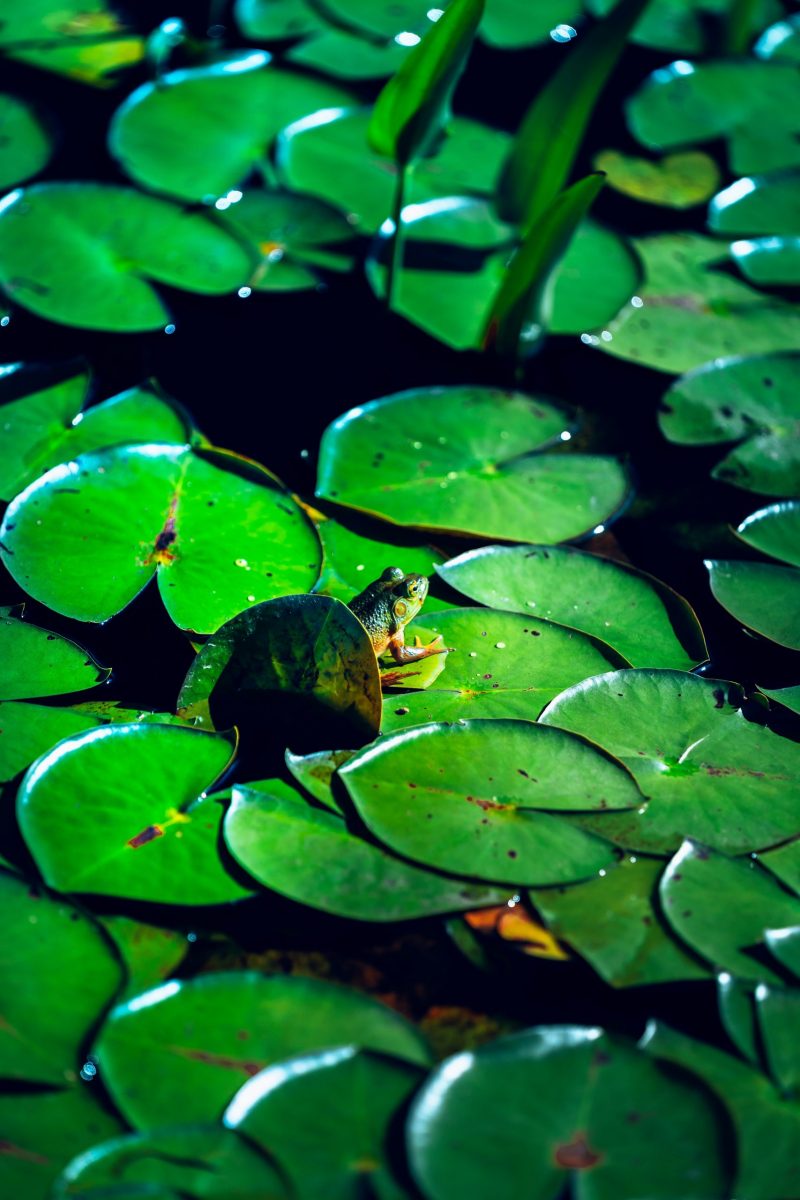
Water lilies are known for their rapid rate of growth. Under ideal conditions, they can produce new leaves and flowers within a matter of days, creating a visually striking display in a short period.
Some water lily species, such as the night-blooming water lily, have flowers that open at dusk and close by morning. These nocturnal blooms look mysterious and alluring.
Where to find them
Water lilies are native to the temperate and tropical parts of the world.
They grow in the Americas, Europe, Asia, Africa and Australia.
Water lilies are highly adaptable. They can thrive in various aquatic environments, including ponds, lakes and slow-moving rivers. They have a remarkable ability to grow in both shallow and deep water.
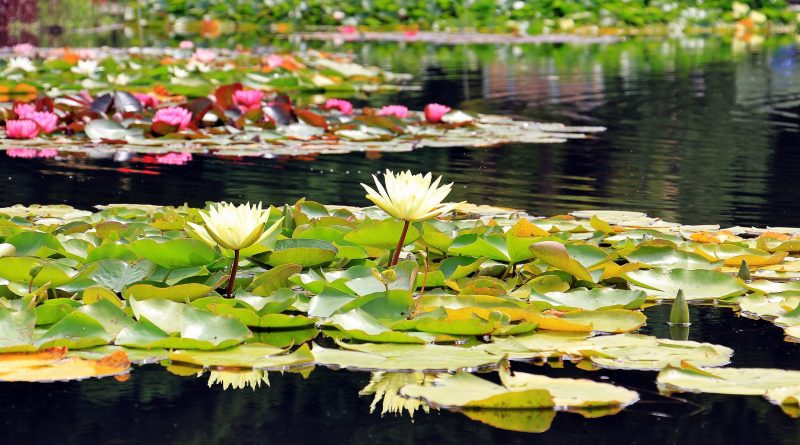
Types of water lilies
There are about 70 species of water lilies. With proper care, water lilies can live for several decades. Some species have been known to survive for over a hundred years.
The world’s largest water lily is the Victoria boliviana, with leaves growing to nearly 10 feet (3 meters) wide in the wild. The largest specimen of the species can be found in La Rinconada Gardens in Bolivia, with leaves of up to 10.5 feet (3.2 meters) wide. The leaf of this giant water lily can support a weight of at least 176 pounds (80 kg). The species wasn’t officially identified until 2022. Before that, it was commonly and mistakenly believed to be Victoria amazonica, one of two previously known species of giant water lily.
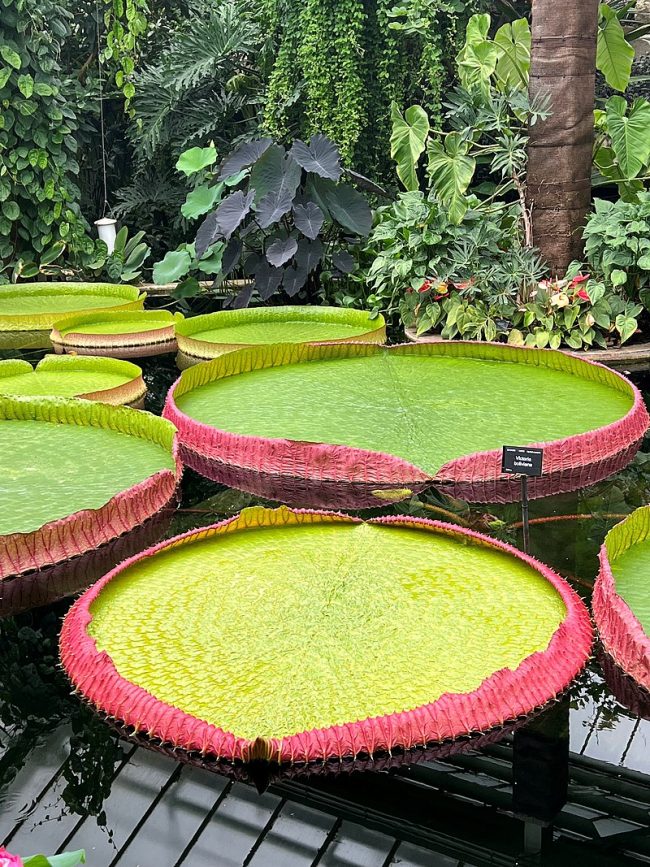
The smallest species of water lily is the Nymphaea thermarum. It has pads 0.3 to 0.6 inches (7.6 to 15 mm) across. Botanists believe that this species, also known as thermal lily, is extinct in the wild. Its only natural habitat was a single thermal pool in Mashyuxa, Rwanda, but a change in conditions due to agricultural use is thought to have changed conditions in the pool. So this pool is now uninhabitable for the plant. But horticulturalist Carlos Magdalena of Spain was able to save the lily from extinction. He did this by successfully germinating stored seeds at Kew Gardens, London, U.K., in 2009.

On May 3, 2002, scientists announced the discovery of fossilized remains of a plant in a slab of stone in northeast China. They named them Archaefructus sinensis and said this fossil’s closest living relative may be the water lily. The ancient plant – believed have lived at least 125 million years ago – lived in clear shallow water, with its flowers and seeds extending above the surface.
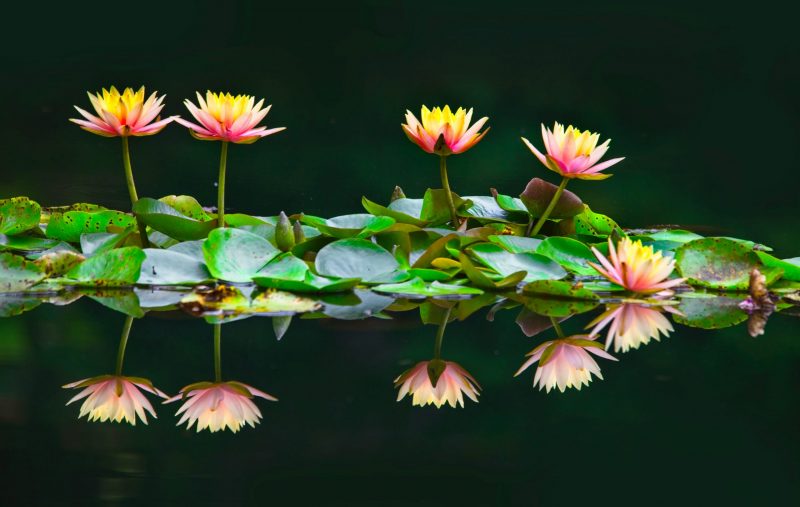
Water lilies and the environment
Although they’re primarily known for their stunning appearance, water lilies also play an important part in an aquatic ecosystem. Because they rest on the water’s surface, the flowers and pads provide shade, keeping the water cooler and preventing algae that thrive in heat from growing in excess. Water lilies also shelter fish from predatory birds and the heat of the sun. And they are oxygenators, providing essential oxygen for fish and other organisms.
Also, the flowers attract pollinators such as bees and butterflies.
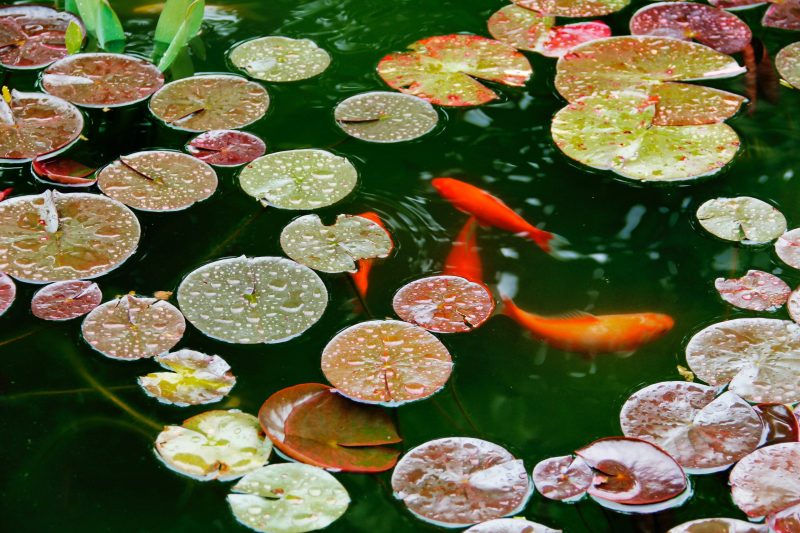
Symbolism
Water lilies mean many things in different areas of the world, but they have special significance in Buddhism and Hinduism. For these religions, the water lily symbolizes resurrection, because these flowers close up at night and reopen in the morning, similar to a spiritual rebirth.
Buddhists also believe that the water lily represents enlightenment because a beautiful bloom emerges from the dark mud.
Water lilies also held great significance in ancient Egyptian and Hindu cultures. The ancient Egyptians associated the blue water lily (Nymphaea caerulea) with the sun god and it was often depicted in art.
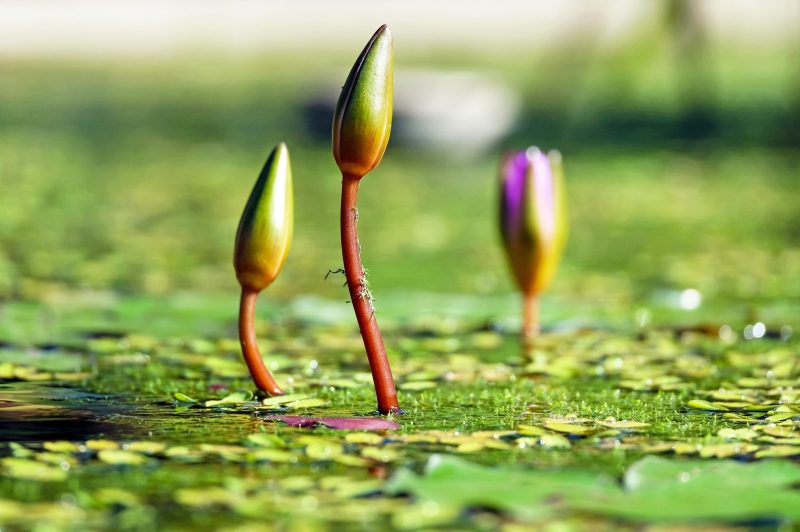
Interesting facts
Certain varieties of water lilies emit a pleasant fragrance, adding an enchanting aroma to any garden or pond. The scent varies depending on the species and can range from subtle to strong and intoxicating.
The tubers or roots of some water lily species are edible and have been used in traditional cuisines in various countries.
Some traditional medicinal practices use water lilies for their healing properties. They are believed to have anti-inflammatory and analgesic effects and can be applied topically to treat skin conditions.
Thank you to the amazing photographers from Pexels and Unsplash.
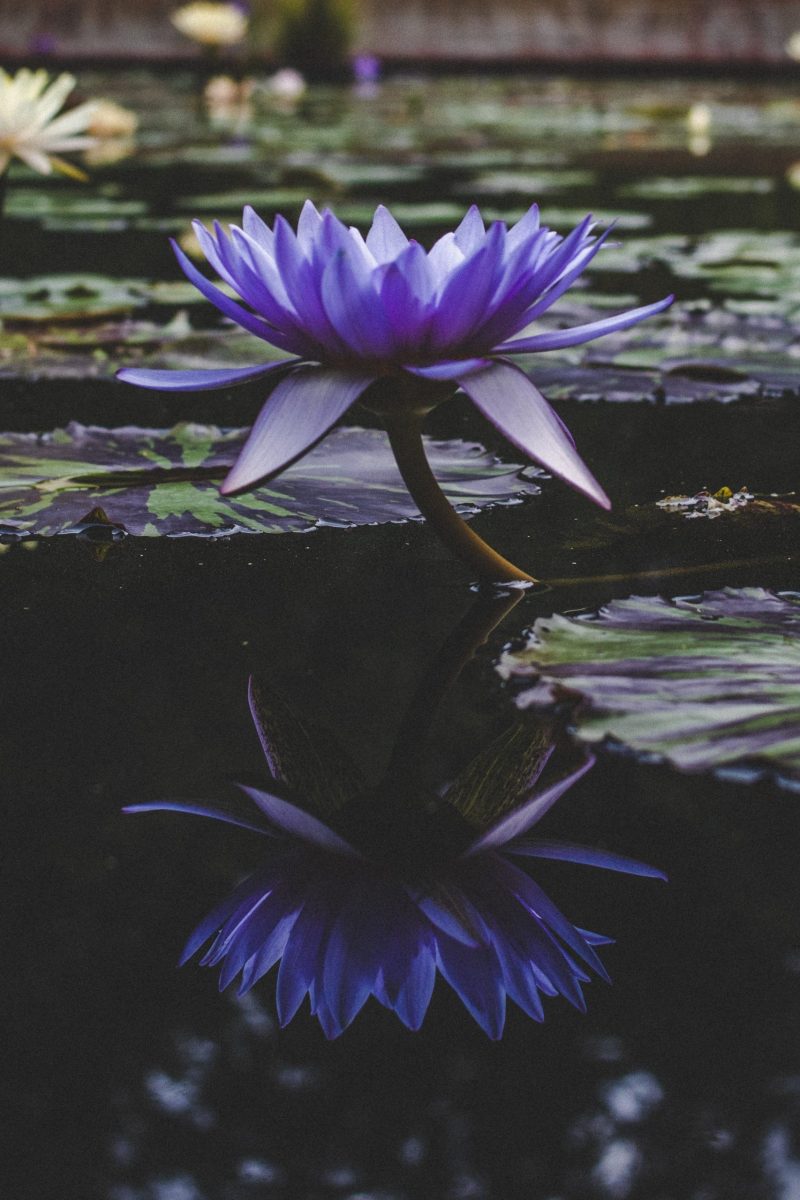
Bottom line: Water lilies are plants known worldwide. They are colorful and beautiful, and they are also important players in the aquatic ecosystem. Learn more about these plants capable of supporting impressive weights.
Read more lifeform of the week articles
The post Water lilies, beautiful and colorful: Lifeform of the week first appeared on EarthSky.
0 Commentaires